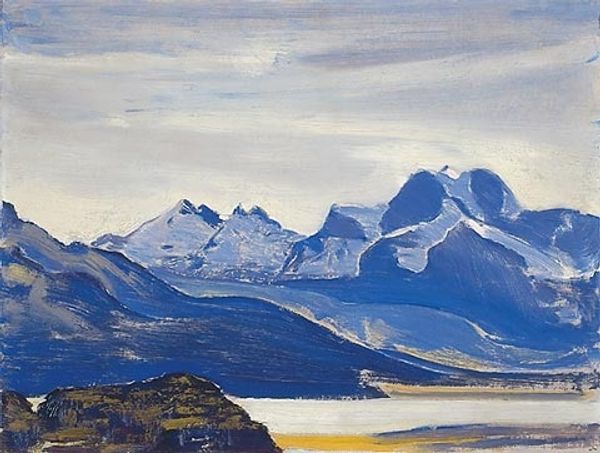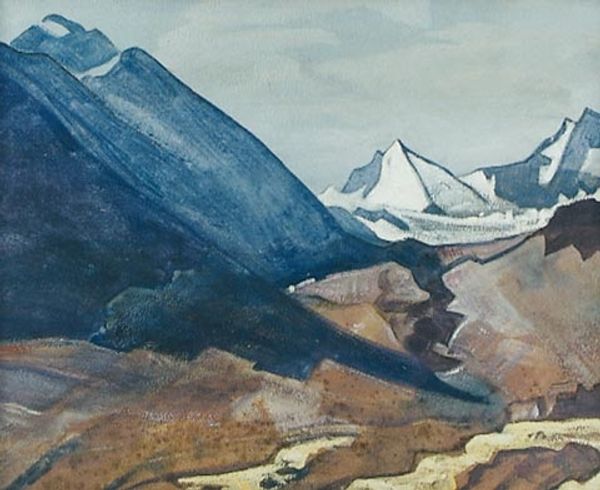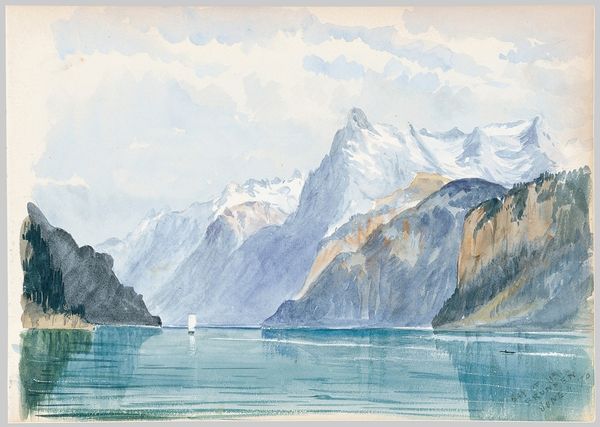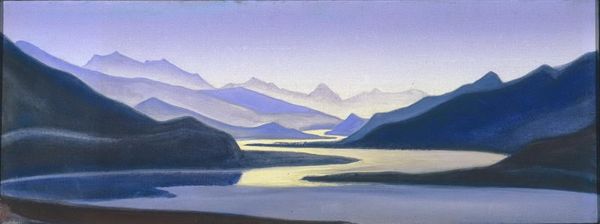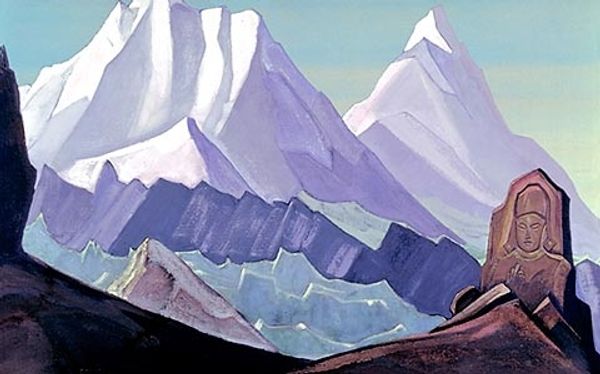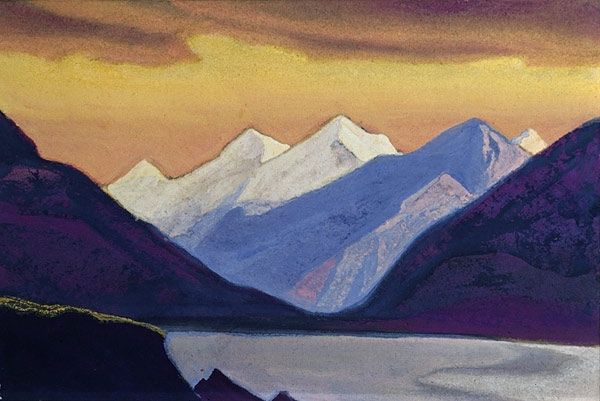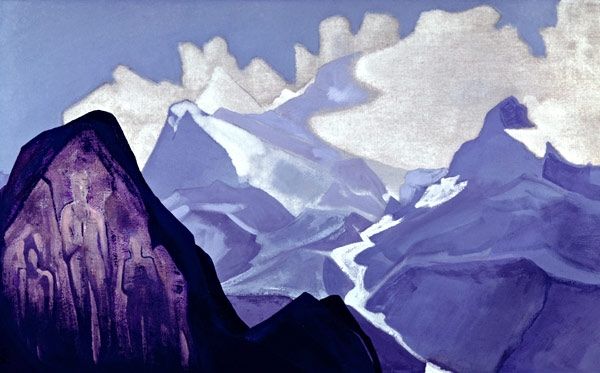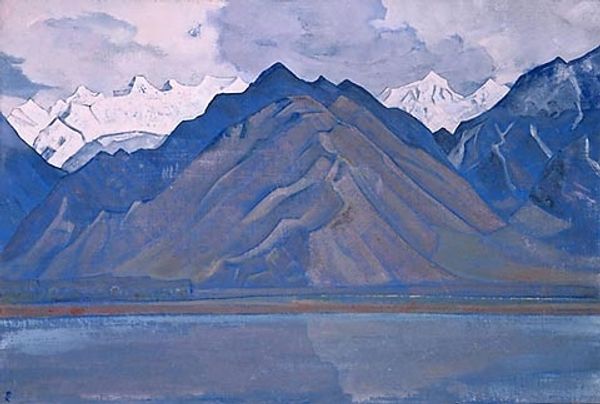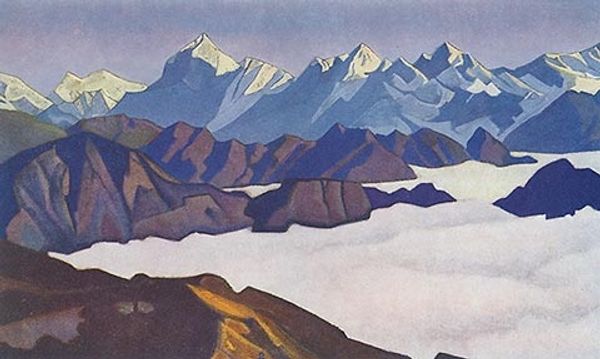
Copyright: Public domain
Curator: Looking at Nicholas Roerich’s “Lake Nag,” created in 1925, I'm struck by the somber mood, the steely blues, and the way the mountain peaks are jagged, almost serrated, giving a feeling of untamed wilderness. Editor: The work’s power comes directly from the formal arrangement. Note how the artist contrasts sharply angled lines in the mountains against the comparatively tranquil surface of the lake. This creates a deliberate tension between dynamism and stasis. Curator: True, but Roerich wasn’t merely painting a pretty landscape. The mountains, these looming giants, resonate across cultures, embodying permanence, spiritual aspiration, and the overwhelming force of nature itself. Editor: The use of watercolor is also quite skillful, isn't it? Notice the delicate layering of pigments in the sky; how he manages to imply light and shadow with such economy. This isn't just representation, it is pure formal manipulation of hue and tone. Curator: I think it speaks to something more profound than that. Consider the potential influence of Eastern philosophy in Roerich's symbolism. Water, for instance, often represents the subconscious, while mountains, as we discussed, can signify enlightenment or obstacles to overcome. The viewer is invited to meditate on this dialectic. Editor: One can't overlook the spatial arrangement either. The foreground elements act as framing devices, compressing depth, leading the eye systematically towards the focal area. This calculated visual path contributes to the reading of space, activating it for the observer. Curator: Absolutely, and it reminds me of Romanticism's fascination with sublime nature – the overwhelming power and grandeur that reduces humankind to insignificance. Lake Nag reflects a similar sensibility, don’t you agree? Editor: I can see that, though my focus still keeps returning to the way the artist employs vertical lines. See the strong, defined angles in the peaks that bring energy to the horizontal quiet of the water's expanse. It shows the structure supporting all else. Curator: So, ultimately, we’re left with a work that is both formally compelling and symbolically rich, inviting repeated viewing and contemplation. Editor: Indeed, there is an enduring fascination, stemming both from a careful awareness of compositional architecture and perhaps something unnameable, drawing the eye deeper into the plane.
Comments
No comments
Be the first to comment and join the conversation on the ultimate creative platform.

